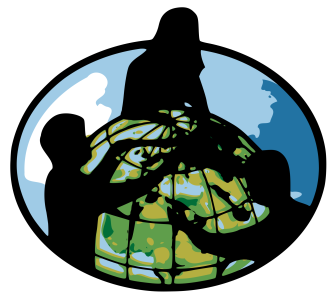Recently, I’ve been trying to rebuild my online education PLN (personal learning network). This past year was my first year at a new school, and in the transition, I rarely found myself online with time to deeply reflect on my practice.
It’s been wonderful-- particularly now that I’m at a place where I can really sink into topics that are brought up. The online space has the opportunity to get flooded with buzzwords and the “newest trend,” and while it’s easy to jump onto an idea that sounds good, I’ve realized I don’t always take the time to internalize and evaluate what it actually means.
I felt this way recently when seeing the term “Trauma-Informed Education.” I had an idea of what it meant, and the concept sounded great, but I realized that I hadn’t really thought about what that really looked like. What are the concepts and understandings that are gained and used in trauma-informed education?
Fortunately, the internet also allows for great connections to be forged. I was introduced to Dulce-Marie Flecha, an educator and writer receiving her Masters in Literacy and implementing trauma-informed education in her work. I got to speak with her, and as I internalized her work, I was remembering an essential fact about good teaching.
It’s easy, I think, to look at “difficult” populations and think about “those kids,” and how to “deal with them.” As Dulce notes, though, considering the effects trauma has on students isn’t “content"-- it’s a culture of care and understanding in our classrooms. It’s ways to support and love them even when they struggle. “Those kids” are OUR kids, and they are KIDS. They deserve an amazing education designed with understanding who they are.
More from Ms. Flecha is below.
What is your background in education? What inspired you to become an educator? Were there any particular memories or stories that inspired you to continue on this path? How have your own experiences and beliefs shaped your work in trauma-informed education?
I am the proud daughter, niece, and cousin of New York City educators, I’ve been sleeping and reading in the back corner of classroom rugs since before I can remember. I did spend a lot of my childhood fervently denying that I’d ever become a teacher. Whoops.
I wasn’t any one moment [that changed my mind] but a four-year-long shift throughout undergrad. I volunteered with the Penn State’s THON [a philanthropic club] and met incredible children with unique needs that weren’t always met, as well as seeing my mother’s work as a therapist for foster children after she left the classroom. I experienced my first major manic/depressive episodes and I learned intimately what it means to attend class in pain. After graduation, I ended up back in my childhood Bronx neighborhood at a public school devoted to recently-arrived immigrants, then moved to a homeless shelter classroom

I think a lot of us understand trauma-informed and social-emotional work as manifested through individual relationships. Those one-on-one relationships are invaluable, but I think trauma-informed education is most effectively implemented through our school and classroom systems in ways that allow every child to access an equitable education without demanding each child share their stories. None of us are entitled to the details of a child’s pain.
How does your work differ from preconceived notions of education? What similarities are there?
Decentering schools as the most important space for learning experiences is a shift in mindset that I still struggle with, honestly. I think seeing more teachers from different settings in educational conferences would go a long way in disrupting this notion.
But reading is reading no matter what or where we read. I attended a graduate program that taught the teaching of reading and writing from the perspective of traditional classrooms and emphasized the value of classroom literacy routines. There are many things I’ll need to adapt to the needs of my students in a shelter setting, but the value of a literacy routine hasn’t changed.
How do trauma and race intersect in your work? How do aspects of generational trauma play out, particularly in the communities you serve?
Homeless shelters exist at the intersection of inequity. Homelessness is a symptom of racist hiring practices, LGBTQ+ discrimination, gender violence, ableism, gentrification and segregation, abuse, incarceration--marginalization that disproportionately impacts communities of color. I had no white students at my first homeless shelter. I don’t anticipate having many white students at my next homeless shelter. Gentrification in New York City overwhelms people of color. Recent research summarized by the Coalition for the Homeless found that 58% of the people living in NYC’s shelters are Black, 31% are Latinx, and 7% are White.
Part of serving a child is also serving their families. Teaching at a homeless shelter offers me access to far more information about families than I did while teaching at a public school--there are case managers on site, social service meetings between departments, and detailed intakes in my office. At the core of my work is an understanding that being the same race as a student and their caregiver does not make me an expert on their trauma.
What are the misconceptions or myths about the work you do or community you serve that you hope to break down?
I would like to soccer-style drop kick the notion that poverty-stricken children are unloved by their families, or that these families do not care about their child’s education. Educators are far too prone to blame marginalized caregivers for their inability to comply with our traditional inequitable educational systems. We cannot demand a family’s trust while rigging our educational systems against them.
I’d also like to tell the world trauma-informed teaching is not a content, but a method for teaching content. It is at its absolute best when built into our daily routines, classroom space, instructional strategies, and school-wide systems. Reading a book that features a character experiencing trauma means very little if our methodology is inaccessible to students experiencing trauma.
What are some practices teachers in more “traditional” K-12 settings can implement to support students dealing with trauma or crisis? What should we be reading?
My Masters degree and the bulk of my research has been in literacy. We all need to think critically about writing prompts. Most of my students at the shelter had entered the transitional housing system in January and July--just after the holidays and just after the school year ended.
I believe wholly that trauma-informed work is best when critically analyzing educational structures. Invest in establishing classroom routines for kids to take breaks when they are emotionally overwhelmed. Some classrooms have hand signals for students to communicate when they’re exhausted. I designate a space in my classrooms for kids to cool down in--my Early Childhood “Cozy Corner” was a collection of pillows, blankets, and unplugged over-the-ear headphones to muffle sound.
I’m currently reading Building Resilience in Students Impacted by Adverse Childhood Experiences: A Whole Staff Approach by Victoria Romero, Ricky Robertson, and Amber Warner, a great text for introducing educational communities to childhood trauma. I also constantly lean on Alex Shevrin for insight and support. The National Child Traumatic Street Network has incredible resources. New York State’s Technical and Education Assistance Center for Homeless Students has a long list of articles and toolkits on classroom strategies and whole-school structures.
What inspired you to return for you MA? What do you hope to gain from it? What’s next for you?
I had no idea my career would focus on highly mobile students and children living with trauma. I’ve always known that my life would center on reading and writing. I wanted to study literacy education and work towards adapting literacy practices to my shelter classrooms. Teaching on shelters is lonely work--I attended professional development with my colleagues at the shelter system and no one else. I didn’t go to educational conferences, I thought they were for “normal” teachers. Being around different educators again was thrilling.
I feel far more comfortable with educational action research after finishing my program. I want to continue to study literacy practices that fit the needs of children experiencing homelessness and trauma. I didn’t realize how little most classroom teachers know about homelessness and trauma. I’ve had wonderful conversations about homelessness and trauma on Twitter, especially through #DisruptTexts, #EduColor, #SafeSpaceConvos, and #ILAchat. I’ve started publishing on Medium, I’m presenting at a few conferences in the fall, and I’m hoping to facilitate more conversations between educators in traditional and nontraditional settings.
What would you tell yourself five years ago or what advice do you have for new teachers? Particularly young teachers of color?
The relationships I’ve developed with veteran teachers of color have revolutionized me professionally and personally. It’s difficult to find veteran teachers of color in such a white profession. Research teachers and scholars of color. Find the teachers who are doing the work you love. Send emails, slide into DMs, shoot your mentorship shot.
What obstacles are you or those in your field current facing? How can people support?
There’s a widespread misconception that homelessness, mental illness, and trauma are anomalies, despite the research in Adverse Childhood Experiences and mental health that show otherwise. Unfortunately, the trauma-informed field must convince the educational world that these issues exist. I’d also recommend that teachers research the alternative educational settings in their communities. There are classrooms in prisons, shelters, hospitals.
Conferences are difficult to manage for educators in alternative settings, who are often paid less than teachers in traditional schools. I’d be thrilled to see conferences and professional learning organizers reach out to educators in alternative settings, I’d be happier to see teachers researching the alternative settings and connecting with their teachers.
What amazing things are going on in your work or field that you’d like to shout out?
There are so many women of color without Twitter accounts or published essays who have been doing incredible work in a variety of settings. My mother taught for over a decade in New York City public schools before transitioning to counseling foster children. A previous supervisor had dedicated decades to establishing early childhood and afterschool programs at homeless shelters. My co-teachers Veronica Molina, Angelica Vargas, and Trené Harris are still some of the greatest teachers I’ve ever seen work.
Edyson Julio, a fellow Bronx kid and an eloquent speaker, taught onsite at Rikers Island Jail Facility before heading to Harvard’s Graduate School of Education. Alex Shevrin, whose name I say a lot, taught in alternative settings and is now advocating for trauma-informed, antiracist educators.

Dulce-Marie Flecha is the daughter, niece, and cousin of New York City public school teachers. She began her career as the Special Education teacher of a Bronx high school that exclusively accepted recently-arrived immigrants. Two years later, she transitioned to serving as the Head Teacher onsite at an East Harlem homeless shelter. She recently graduated from the Teachers College Literacy Specialist Program and is thrilled to return to shelter classrooms this Fall.
Photo via PXHere


